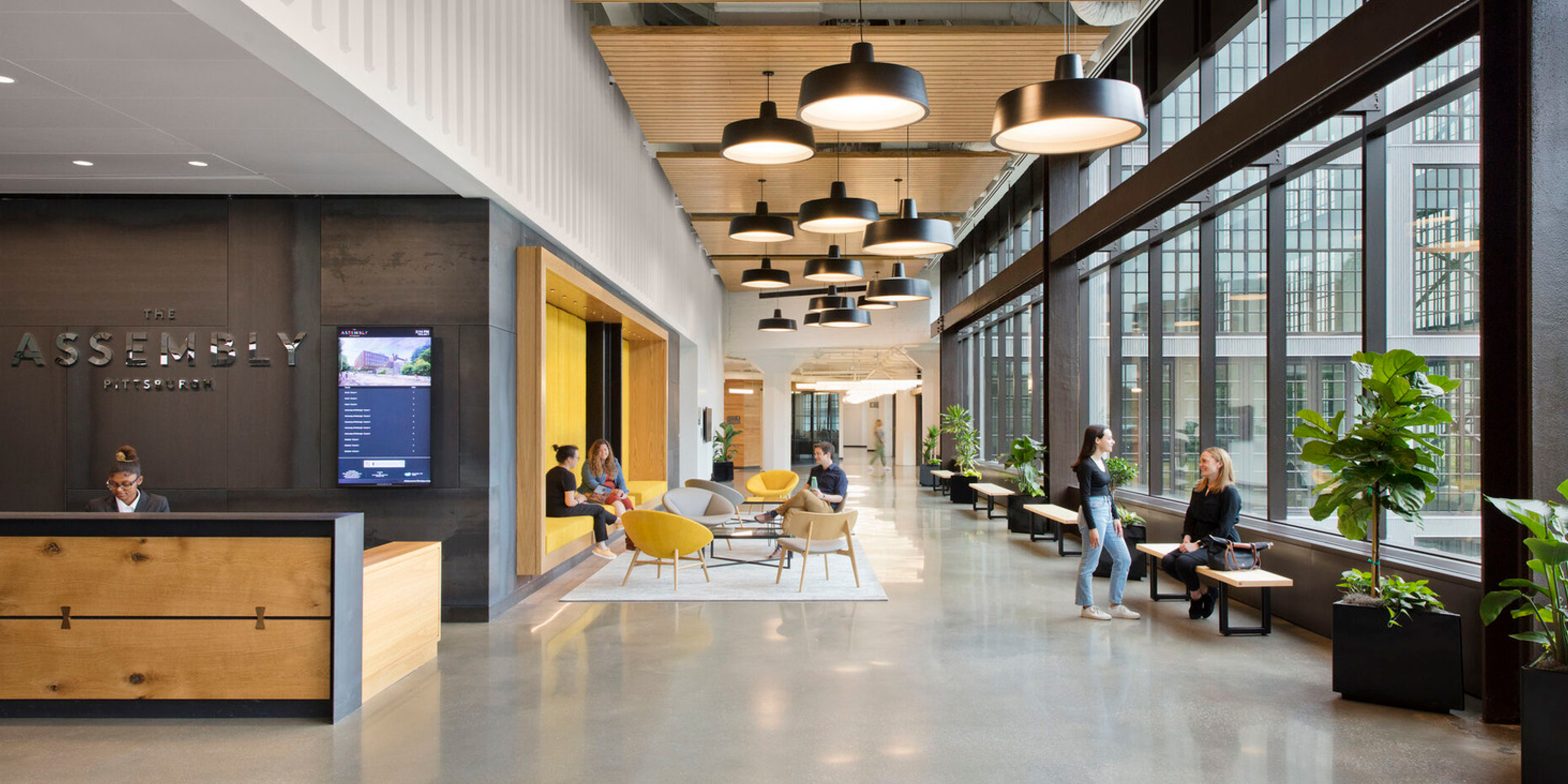Reshoring the Rust Belt (Part 1 of 4)


Existing Buildings and Industry 5.0
“New ideas must use old buildings.” – Jane Jacobs
The industrial cities of America’s yesteryear hold a secret stash of resources that will soon become a market differentiator: existing buildings. While vacancy rates are high everywhere, cities like Baltimore, Pittsburgh, Cleveland, Detroit, Chicago, and St. Louis are especially well-positioned to convert their store of underutilized buildings into environmental, social and economic value.
This shift in the real estate sector will play out as the economy reorients around social outcomes. The robust technological and information infrastructure of the Fourth Industrial Revolution has paved the way for Industry5.0 – a paradigm change that makes wellbeing and resilience the primary goal of business. In the Rust Belt, efforts to reuse buildings and building materials will help fuel this pro-social transition.

The Climate Opportunity
The world has imagined a future where air pollution ends by2050. Inspired by the UN’s Paris Agreement, many nations, cities, and businesses have adopted climate goals. And in the decade since the Paris Agreement there has been significant progress — especially in the energy sector.
However, many sectors are hard to decarbonize — construction being one of them. This is mostly due to the embodied carbon – the energy required to obtain raw materials and then manufacture, transport, and install them as building products. The industry is working to innovate low-carbon materials; however, the technology is not ready to scale. Where solutions exist, such as mass timber construction, they often come with significant cost premiums.
Reusing buildings is the most effective way for organizations to reduce construction emissions. Post-Industrial cities can offer a robust stock of existing buildings, alongside the strategic resources that made them centers for manufacturing in the first place — transportation, water, energy, and labor. Many of these cities also offer less physical risk from climate change compared to their coastal or southern counterparts. Companies committed to climate action and dependent on real estate are going to see a lot of up-side to developing in post-industrial cities.

Material Advantage
For any organization with a climate goal of reducing emissions by 2030, 2040, or 2050, existing buildings present a pathway to success. Given the options available in current markets, most new construction projects are limited to carbon reductions in the range of 10-25% against a similar baseline project. Building reuse reveals new opportunities to achieve meaningful reductions. Using salvaged materials essentially wipes out the emissions that are otherwise caused by manufacturing new products. Because the material product itself is typically around 70% of a building’s life cycle embodied carbon emissions, the value of reuse is apparent.

Taking Stock of Carbon Value
The balance sheet for capital projects is not just tracking dollars anymore. Carbon accounting is becoming more common in the construction industry. This transformation results in new incentives to reuse buildings instead of building new. Where new construction is warranted, progressive developers are prioritizing low-carbon materials, often paying a premium.
Although regulations around carbon emissions are piecemeal, the voluntary carbon market provides a financial value of carbon. Accounting standards and investor sophistication has raised the cost of carbon offsets, although it remains a fraction of the social cost of carbon. Some organizations have even established a shadow price for carbon to support internal decision-making.
To capitalize on the carbon value of underutilized buildings, the real estate sector needs a reliable inventory. By providing analytics on the existing building stock in a city, this database would serve as a catalog for redevelopment opportunities as well as a resource for harvesting materials. Developing an inventory system for buildings and materials may seem like a daunting task, but it is already underway at multiple levels:
- Municipal governments are requiring building materials to be diverted from landfills. For example, the City of Boulder requires a deconstruction plan to accompany demolition permits.
- Developers are disclosing the embodied carbon of projects as a differentiator in a competitive leasing environment.
- The Embodied Carbon Harmonization and Optimization effort has convened a broad coalition to develop a schema for reporting data on embodied carbon.

Carbon Carrots and Sticks
Policies at the local, state, and national levels can support the real estate market’s transition to Industry 5.0. To succeed, regulations and incentives at each level of government must work together while also being understandable.
- In the US, the Buy Clean Initiative provides funding for agencies to use low-carbon materials, while the SEC’s climate-related risk disclosure requirements promise to create transparency.
- The UK has undertaken an effort to expand the use of Digital Product Passports as a way to track building products over their lifespan.
States are testing the effectiveness of targeted policies.
- Colorado has expanded access to C-PACE financing for projects that use low-carbon materials.
- California has updated its building code to limit the embodied carbon of key contributing materials such as concrete and steel.
At the local level, cities have several levers that can unlock the value dormant in their building stock. New York is a good example of how these tools can work together.
- NYC Housing Preservation & Development uses Enterprise Green Communities, a certification that incorporates provisions for low-carbon construction.
- The city is also leading by example with the Circular Design & Construction Guidelines.
- The Building Performance Standard Local Law 97, while focused on energy use, will also create a platform for tracking space utilization.

Rewarding Co-Benefits
Beyond carbon, reuse can have other benefits such as investment in local communities — by improving the value of the neighborhood and providing more options for prospective tenants.
- New business and jobs will be needed to support building renovation and deconstruction. These opportunities are well-suited to support the local economy.
- There are also city planning benefits, such as community cohesion, density, and reduced stress on municipal infrastructure and services. This reduces physical risk to the entire city.
- Salvaging building materials reduces, and may help reverse, land use change. This results in more habitat to support biodiversity.
- Building reuse inherently provides a connection to history and a sense of place. In The Death and Life of Great American Cities, Jane Jacobs describes how existing buildings support entrepreneurs and the creative class – essential components of a thriving city.
Existing buildings are typically less energy efficient than new construction. Deep energy retrofits involve adding insulation, replacing windows, and upgrading mechanical and electrical systems. A study by the Rocky Mountain Institute shows that, considering the whole life of the building, the retrofit strategy results in significantly less carbon emissions than building new. The skilled work required for building energy retrofits is also well-suited to the human-centered imperative of Industry 5.0.

Conclusion
The Rust Belt has a competitive advantage in low-carbon construction, with a wealth of resources that are ready to activate. Developing a reliable inventory of underutilized buildings is an important first step. Creating incentives and setting limits for construction emissions will further support market innovation. In addition to dramatically reducing construction pollution, building reuse supports smart growth while reinforcing the social and economic health of local communities.
Up next in Reshoring the Rust Belt: Part 2 of the series outlines the embedded value of historic buildings that is easily missed at first glance.
View More Resources
Benefit from our expertise



